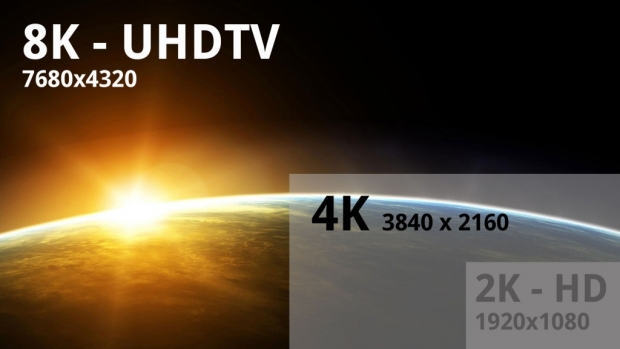The prices went down to an acceptable level, so it doesn’t make much sense to buy a full HD TV anymore as for a couple of hundred dollars more you can get the same size 4K TV. This is especially true of the 50-plus-inch space, as 4K has not taken off on smaller sets (and does not make nearly as much sense either).
LG, Samsung and Panasonic are expected to showcase their 8K TVs at CES 2015. What we call 4K is also known as UHD, and the 3840x2160 resolution is bound to become the next major TV standard.
The 8K resolution offers 16 times the pixel count of full HD 1080p resolution or four times the 4K resolution. We are talking about 7680x4320 pixels. There is no doubt that movies, TVs and cameras will get to this resolution, but we don’t expect this to happen soon, probably by the end of the decade.
The main issue with 4K is lack of content. You have a few TV shows at Netflix that work only on Samsung TVs, you cannot watch Netflix on desktop computers and 4K monitors which is really a wasted opportunity.
To make the situation even worse, there is no digital distribution format for 4K video, there are no physical discs that can support 4K video. This means that LG, Samsung and probably Panasonic will use 8K TVs in some incredible 100-inch or bigger sizes to show what is coming and to hope that they can boost the sales of 4K displays that are really happening.
It took a few years before HD TV became standard, with a lot of broadcasters supporting the resolution. We still have to see the first TV channel to support 4K and we wish that even sports events would be recorded and played in 4K UHD 3840x2160. The day will come but definitely before you see 8K that currently plays off of hard drives via USB 3.0 at the back of these prototype TVs.
Published in
News
CES 2015 is all about 4K and 8K TVs
We don’t have 4K content, but let’s show off 8K anyway
2015 is shaping up to be a big year for 4K adoption and we expect a lot of enthusiasts and consumers will end up buying their first 4K monitors, TVs and other devices over the next twelve months.


